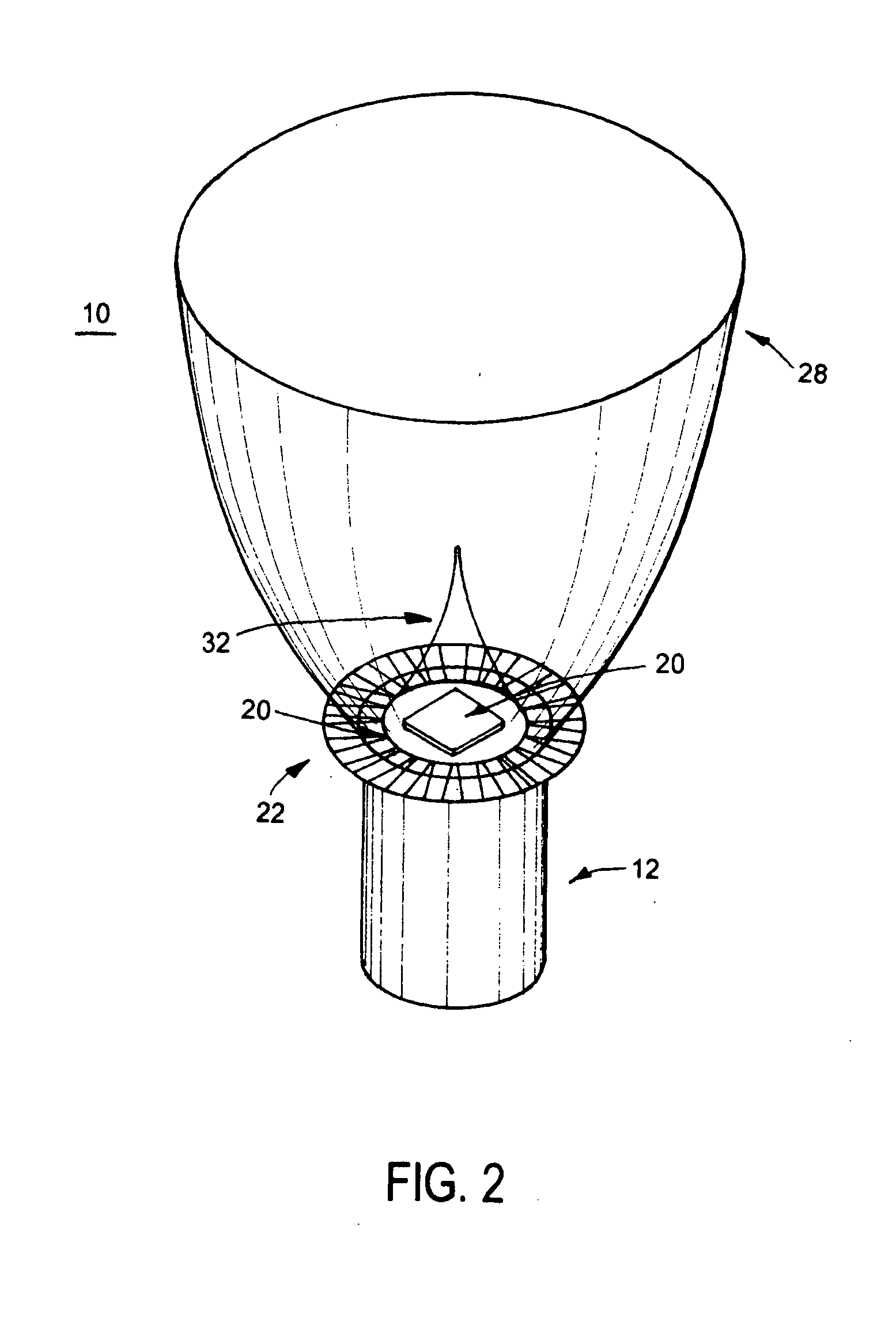Multiple light-emitting element heat pipe assembly
a technology of heat pipe and light-emitting elements, which is applied in the direction of lighting and heating apparatus, printing, instruments, etc., can solve the problems of large amount of waste heat, excessive heat release under operating conditions, and limited applicability of form and us
- Summary
- Abstract
- Description
- Claims
- Application Information
AI Technical Summary
Benefits of technology
Problems solved by technology
Method used
Image
Examples
Embodiment Construction
Definitions
[0036]The term “light-emitting diode” (LED) is used to include a general or specific type of LED or laser diode such as resonant cavity LED (RCLED), superluminescent LED (SLLED), organic LED (OLED), flexible OLED (FOLED), Flip Chip LED (FCLED), high-brightness LED or other LED as would be readily understood by a worker skilled in the art.
[0037]The term “light-emitting element” (LEE) is used to define a device that emits radiation in a region or combination of regions of the electromagnetic spectrum for example, the visible region, infrared and / or ultraviolet region, when activated by applying a potential difference across it or passing a current through it, for example. Therefore a light-emitting element can have monochromatic, quasi-monochromatic, polychromatic or broadband spectral emission characteristics. Examples of light-emitting elements include semiconductor, organic, or polymer / polymeric light-emitting diodes, optically pumped phosphor coated light-emitting diode...
PUM
 Login to View More
Login to View More Abstract
Description
Claims
Application Information
 Login to View More
Login to View More - R&D
- Intellectual Property
- Life Sciences
- Materials
- Tech Scout
- Unparalleled Data Quality
- Higher Quality Content
- 60% Fewer Hallucinations
Browse by: Latest US Patents, China's latest patents, Technical Efficacy Thesaurus, Application Domain, Technology Topic, Popular Technical Reports.
© 2025 PatSnap. All rights reserved.Legal|Privacy policy|Modern Slavery Act Transparency Statement|Sitemap|About US| Contact US: help@patsnap.com



